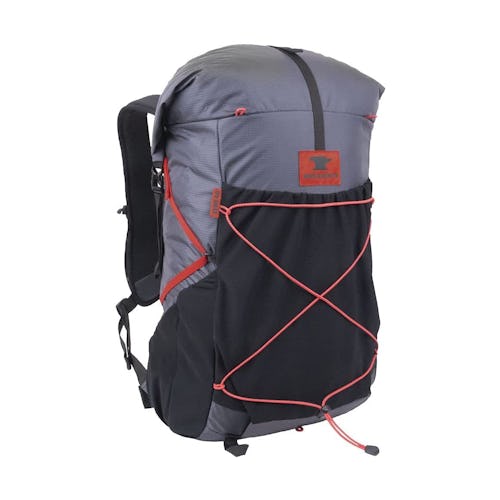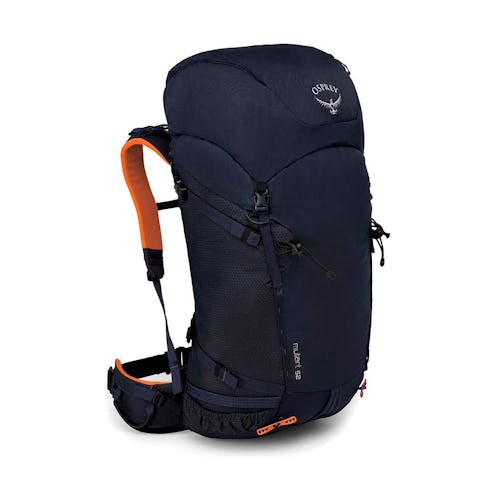
If you can buy just one tent to take with you on every one of your adventures, you’re going to save a lot of money. But unfortunately, it’s not that simple for backpacks. This is one piece of outdoor gear that, inevitably, you’re just going to have a collection of in your closet.
The packs you bring on a short weekend backpacking trip in the desert will be vastly different from the pack you carry on the Appalachian Trail or on a mountaineering expedition to Alaska. Lucky for you, I'm a veteran backpacker and here to help you figure out what size backpack you really need, and share with you my seven favorite bags.
Things to know
What size backpack do you need?
Size is the biggest difference among these packs. Most people can get away with a 40- to 50-liter backpack (or even less if you’re a particularly frugal packer) for a long weekend trip into the mountains. For a weeklong trip, those same hikers might want a pack in the 60- to 80-liter range. And if you ever decide to go climb Denali, you’ll be looking at 100-plus liters.
While you can obviously put 50 liters worth of gear into a 70-liter backpack, you won’t always want to. As packs get bigger, they also become more capable of carrying larger loads. The hip belts get beefier, the skeleton inside the pack becomes stronger and stiffer, and the overall supportiveness of the pack matches the load they expect you to be carrying. And while the suspension system of a 100-liter backpack might be great when you’re carrying 70 pounds of gear, it’s overkill for much less than that: You’ll feel stiff, and rigid, and the massive hip belt is probably going to be warm.
Do some mental planning
Thinking about starting backpacking? Begin by imagining the types of trips you’re going to go on. You obviously only need to start out with one backpack, but it doesn’t hurt to do a little mental planning to imagine what kind of bag you’ll want as you graduate to longer trips. Finding packs that do offer a little versatility is great, but eventually, you’ll have a selection of your favorites to choose from trip to trip, ensuring you’re always comfortable and efficient on the trail.
To help you start, I've rounded up my favorite backpacks across the spectrum — these are perfect for multiday hikes and expeditions.
Input may receive a portion of sales if you purchase a product through a link in this article. We only include products that have been independently selected by Input's editorial team.

For most budding backpackers, a pack in the 50-liter range is the ideal place to start. It's a terrific size for long weekend trips and encourages you to not pack the kitchen sink. As you get more experienced and pick up lighter gear, it might be the most useful size bag, handling most of your trips if you pack right. The men’s Focal and women’s Facet feature a well-ventilated back panel, big hip belt pockets, and just enough organization to make it easy to find your gear.

Coming in at 70 liters of load-carrying capacity, the Mystery Ranch Glacier is a step up from the 50-liter range, which makes it good for slightly longer trips (think week-long) or shorter trips where you just want to carry more food (like dehydrated meals) or creature comforts with you into the backcountry. What sets it apart are all the great pockets and zippers that make organizing and accessing your gear a breeze, which becomes increasingly important as you cram more stuff inside. You can even remove the brain and shoulder harness and turn them into an ad-hoc daypack, which makes this bag versatile for carrying into a basecamp and then branching out for smaller adventures.

Bump up another notch and you’ll end up at the 85-liter Aether (men’s) and Ariel (women’s) packs. I’ve carried mine on three-week trips where I’m able to resupply food every week or so, making it a great bag for thru-hikers and longer trips. When you’re carrying that much gear, you’re liable to start feeling it, but with the Aether/Ariel, you hardly do. A really well-engineered suspension system makes it one of the most comfortably big packs on the market, and it features plenty of tweaks to adjust the fit.

Mountainsmith designed the 40-liter Zerk to be the perfect bag for ultralight thru-hikers. The shoulder straps fit like a trail runners vest and feature a couple of easy-access pockets, while the rest of the pack is extremely minimal: The body is a single compartment with water bottle pockets and a large stretchy mesh pocket on the front. The pack is only for the weight-conscious as support is minimal, but it carries what little weight you did pack close for fast-paced hiking.

Not sure how to feel about backpacking yet? The 60-liter Trailbreak is priced for beginners and versatile enough for whatever intro trips you’re testing the waters on. Features are simple: The suspension system isn’t particularly advanced and the organization is basic but it’s plenty of backpack to get you outside for a couple of nights, and at a price that doesn’t require much commitment.

There are certainly other packs on this list in the 50-liter range, but the Mutant is specifically designed for mountaineering trips and makes packing and staying organized on those adventures much easier. It has attachment points specifically for ice axes, loops on the hip belt for carrying carabiners and other climbing gear, and a mesh net on the brain for holding a helmet. The back panel isn’t going to be super breathable, but it’s designed to prevent snow from sticking to it, making climbing trips far less frustrating.

When you expect to carry 75-plus pounds on your back, there are only a handful of packs that can really do that for you. The AMG 105 is one of them. This massive gear hauler was designed specifically for multi-week mountaineering expeditions like Denali or Mount Everest. It’s made from super burly materials and the hip and shoulder straps have about as much padding as you’ll ever see on a backpack. That means it handles huge loads about as well as you could hope for, comfortably transferring the weight to your hips for weeks on end.







